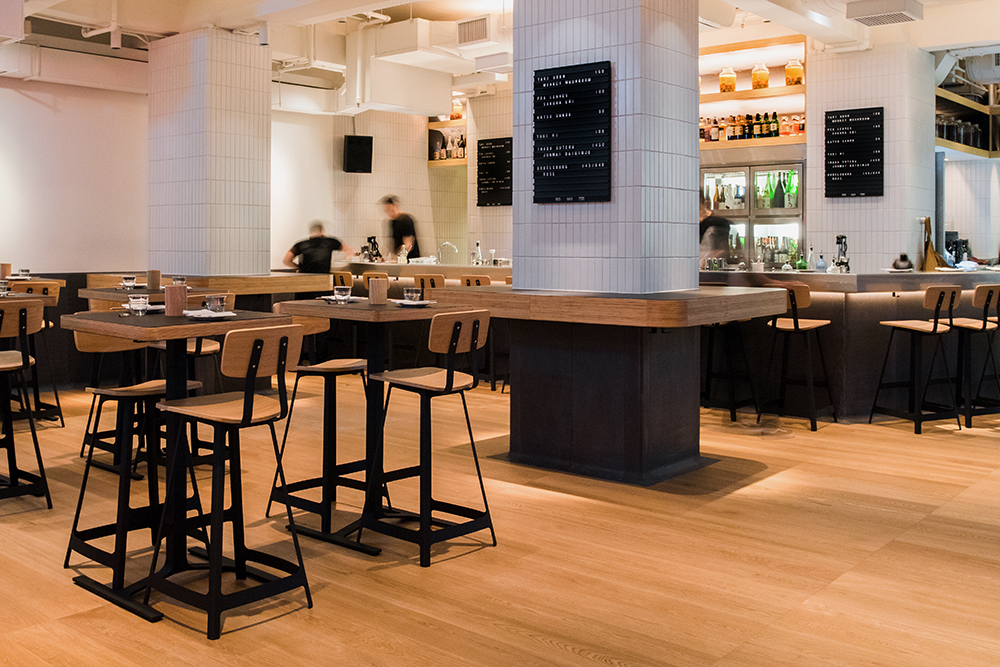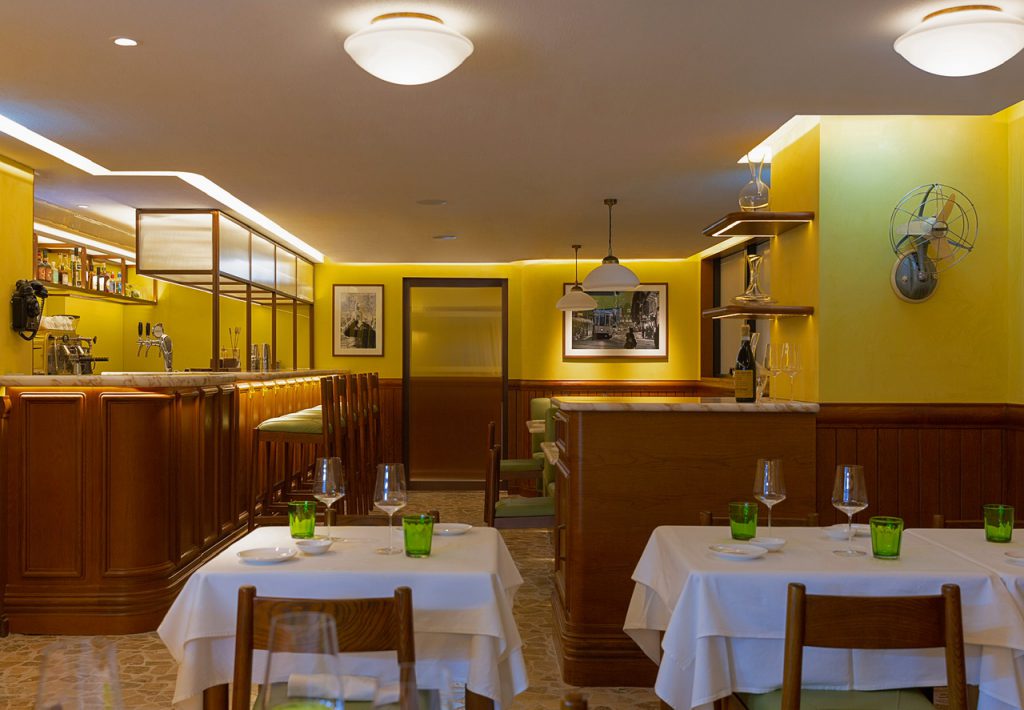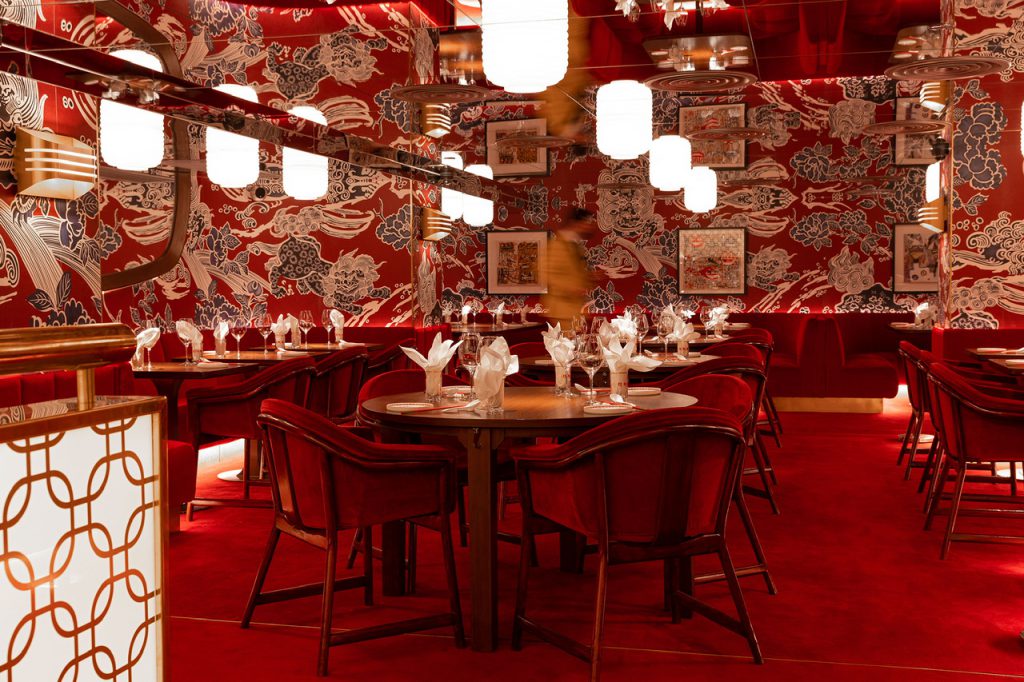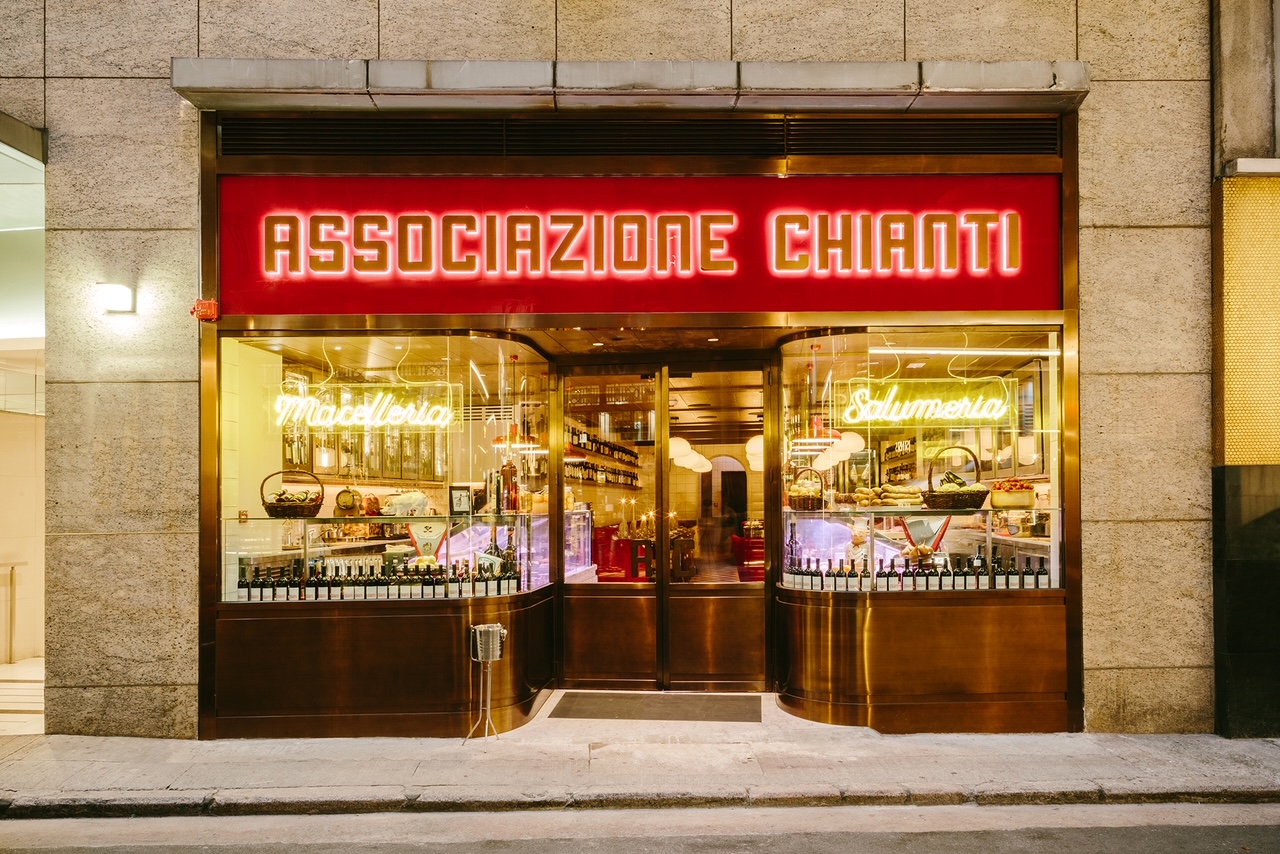The interior designer, known and respected for his cool restaurant designs, tells us about his latest projects, designing from function first and the weirdest food he’s ever eaten.

Who or what inspired you to get into design?
I kind of fell into it through vintage design. When I was 17 I moved from my family home in Kansas City to San Diego. I didn’t have a lot of money and needed to furnish an apartment cheaply. Back then, in the late 1980s, the mid-century modern trend didn’t exist, so I’d go to Salvation Army thrift stores and find a lot of cool things. I filled the apartment with neat vintage furniture.
Then I met a guy who was designing and making furniture in small quantities, and discovered you could have a career as a designer, which I’d never even considered. So then I was doing part-time university, part-time work and taking night classes in furniture-making and woodworking. I put together a portfolio and used that to get into art school.
Vintage furniture continues to inspire me. It has always been a real love. I always try to look at what’s been done in the past and find ways to do work that’s worthy of competing with stuff designed by the greats.
Your furniture is modern, vintage and timeless.
A timeless vibe is the objective. I sometimes get the comment that my furniture is a bit vintage. But I think a lot of that comes from my approach to designing furniture which is similar to how furniture used to be designed in the past.
It’s very much connected to manufacturing and efficient ways of doing things – wasting as little as possible; chairs where the legs unbolt so you can get more of them into a box for shipping. Also, a lot of the factories I worked with didn’t have a lot of incredibly complex technology, so a lot of my designs are designed around the capabilities of the factories that I work with.
There’s a lot of waste in the design industry. You seem to have a very conscientious approach…
For sure. But not wasting stuff is solid common sense. It’s not just about protecting the environment, it’s about spending less money on materials and how you can make it more economical.
It’s like a good chef that breaks down an animal to every single edible piece instead of only using the prime bits.
What and when was your first F&B interior design project in Hong Kong?
Yardbird in around 2011. I got a call out of the blue from a guy asking about buying some chairs of mine he’d seen for a restaurant he was building. His restaurant turned out to be around the corner from my office.
So we met up and hit it off and what was supposed to be the supply of some chairs became the design of the first Yardbird. That was very much a collaborative process and the owner, Matt Abergel, remains a very close friend.

Tell us about your most recent projects…
We just finished a cool place called Testina. There’s a young, very talented and respected chef in Milan called Diego Rossi who owns a restaurant called Trippa – which means “tripe” in Italian.
Diego is like me – a nose-to-tail guy who wastes nothing and uses every part of the animal. He’s quite creative but without any kind of pretention. I met him in Hong Kong when he was here doing a popup a couple of years ago and I’ve also seen him – and his partner Pietro [Caroli] – in Milan where I’ve eaten at his restaurant.
They were approached to open a restaurant in Hong Kong and said they’d do it if I designed it. So that opened up the collaboration to what is essentially a 1970s Milanese trattoria, which is helmed by respected, ex-8½ Otto e Mezzo Bombana chef, Marco Xodo.
We filled the place with some quirky art from Milan and neat vintage stuff, like cool Marelli oscillating fans from the 1950s that we mounted on the walls. The restaurant won’t really be complete until it has aged, which has to happen organically.
I’ve also got a long, really good relationship with Black Sheep Restaurants, the best of the big groups. They’re a real juggernaut; full steam ahead those guys.
A year or two ago they asked me to start working on a redesign of Ho Lee Fook. We designed the original one way back when and it was a victim of its own success, just beaten to death. It was really popular, fun and rowdy and then after so many years everything was just falling apart.
When we originally did it, it was kind of a rough and tumble place that had a bit of a New York-Chinatown, rock and roll, Velvet Underground kind of vibe with Cantonese-inspired cooking.
Hong Kong has moved on from that. And the original chef moved on, so they’ve brought in a very talented young woman who is very rooted in traditional Cantonese cooking; a bit more refined.
So they asked us to come in and figure out how we could re-do it without fucking it up, which was tricky because they also wanted to make it more upscale.
So we went back and reworked it and it’s designed as a kind of love letter to 1960s Hong Kong, like the Shaw Brothers’ films with glamorous actresses in qipaos and gangsters chain-smoking in the corner. So it’s out of my comfort zone – it’s definitely not minimal.
I really enjoy projects where we have a brief that’s like you’re walking onto a film set. Another good example is Carbone, which is like you’re stepping into 1950s New York and have left Hong Kong far behind. The kinds of projects where you’re trying to create an experience are the really fun ones for me.

How long do projects usually take?
Our typical projects are around three to four months from the first phone call to the open restaurant. They are pretty fast-paced. Testina more or less fell within that time range but it might have been a bit delayed because of Covid.
How do your projects start?
It depends. I mean the best projects, the best clients, are the ones that are quite involved. It’s always a better experience when you have a dialogue with the client.
So it’s more like a collaboration?
Very much so, and some more than others. Matt from Yardbird in particular sort of became part of the design team. He and I spend a lot of time discussing, arguing and fighting things out. A lot of work comes to us through word of mouth or someone has seen our work and contacts us.
Some clients are less involved with the process, which makes it more difficult for us. Others give such a broad brief that we’ve got nothing to hold on to and it’s hard to get our head around cause they’ve given us so little to work with.
I worked in restaurants for forever, from when I was 16 or so until I finished university – as a dishwasher, busboy, waiter, bartender. I ran a jazz club in Chicago when I was at school. So I know how stuff works.
I’m not expert – I never worked back of house, I was always front of house – but still, you learn certain things by doing them. Having that background in F&B was really useful to this business because it gives you more of an understanding. And chefs and operators recognise that and appreciate it; they see that we thought about where to put the wait station and why.
Buried underneath the aesthetics is a lot of functional stuff. And that’s the part of the job that I really enjoy. Mostly, our design process takes off from that – it’s about building the bones of a layout that we know will work and that helps us to then elaborate into the aesthetics. But for me all the decorative shit comes later.

What are some of the changes you’ve seen in the interior design sector since starting out?
One shift has been the whole social media story. There’s either an explicit or implicit part of the brief to do something that’s Instagram-ey. I get that, respect it and understand the value of it.
There are certain things that we’ve done that are really playful like, for example, the massive golden fortune cookie outside Ho Lee Fook that you can sit on and do a selfie. These can be good experiences for guests. So where it’s appropriate I’m cool with it.
Each of your projects is very different. Is there an element that runs through them all that is quintessentially yours?
My cocky answer to that would be logic.
Do you find yourself eyeballing interiors when you walk into a new restaurant or bar?
After so many years of working in restaurants it’s an occupational hazard. I notice a lot of stuff that irritates the shit out of me. So I try not to pay too much attention to it.
One thing that bugs you?
Acoustics. So often it’s completely disregarded, like no thought was put towards it at all. And lighting. I’m not a lighting engineer but I’m sort of good at it. I’m smart enough to know that wherever I can convince my clients to bring in a lighting engineer it’s even better because then I can control where I want the light and the kind of effect I want. A lighting engineer can help me achieve that.
Name a restaurant and/or bar design anywhere in the world that totally wowed you…
The Four Seasons restaurant in the Seagram Building in New York designed by Philip Johnson. It’s a masterpiece of modern design and the place for which the phrase “power lunch” was invented. It’s just awesome. Unfortunately, it closed fairly recently.
An outstanding bar or restaurant design in Hong Kong?
Amigo in Happy Valley. It’s very old Europe and such a wacky place, but they’re so earnest about it. It makes me feel like it’s a last little piece of Hong Kong from the period when I wish I had been here – the Vietnam War era, The Honourable Schoolboy by John le Carré, girlie bars in TST.
It’s one of the oldest restaurants in Hong Kong and a really special place. They’re clinging to a typology of experience that just doesn’t exist anymore; they’ve got a three-man Mariachi band that serenades you at the table. It’s like walking into something out of Mad Men. I’m delighted that they’re still around. The world needs more of that kind of place.



The weirdest food you’ve ever eaten?
Dancing shrimp in Bangkok. A styrofoam bowl of tiny living shrimp tossed in lime juice, fish sauce and chilli served from a box on the front of a rusty bicycle. You scoop up the shrimp and try to shovel them into your mouth before they jump off your spoon.
Your favourite place to eat in Hong Kong and why?
Home. I love to cook and because I spend most of my time in or designing restaurants I’m happy to not go out much. Having said that, once in a while I love to stop in to see my friends at Yardbird, Sake Central or any of the great Black Sheep places.
What’s your go-to drink and where do you enjoy it most?
Gin martini as normal as possible and ice cold. Probably the best in town is at the Buenos Aires Polo Club.
Please share your thoughts on Hong Kong’s F&B industry…
I really think that Hong Kong is the F&B capital of the world. There are few places in the world that have so much talent, so much skill, quality, diversity and creativity.
Right now we’re all suffering a lot. It’s really hard for people that want to come here to work. It’s forced some people out just because they can’t deal with being cut off from the rest of the world.
But I think the industry is super-resilient and we’ve just got to tough it out. For the most part even the small players that are really desperately suffering, even those guys are optimistic. There is optimism.

